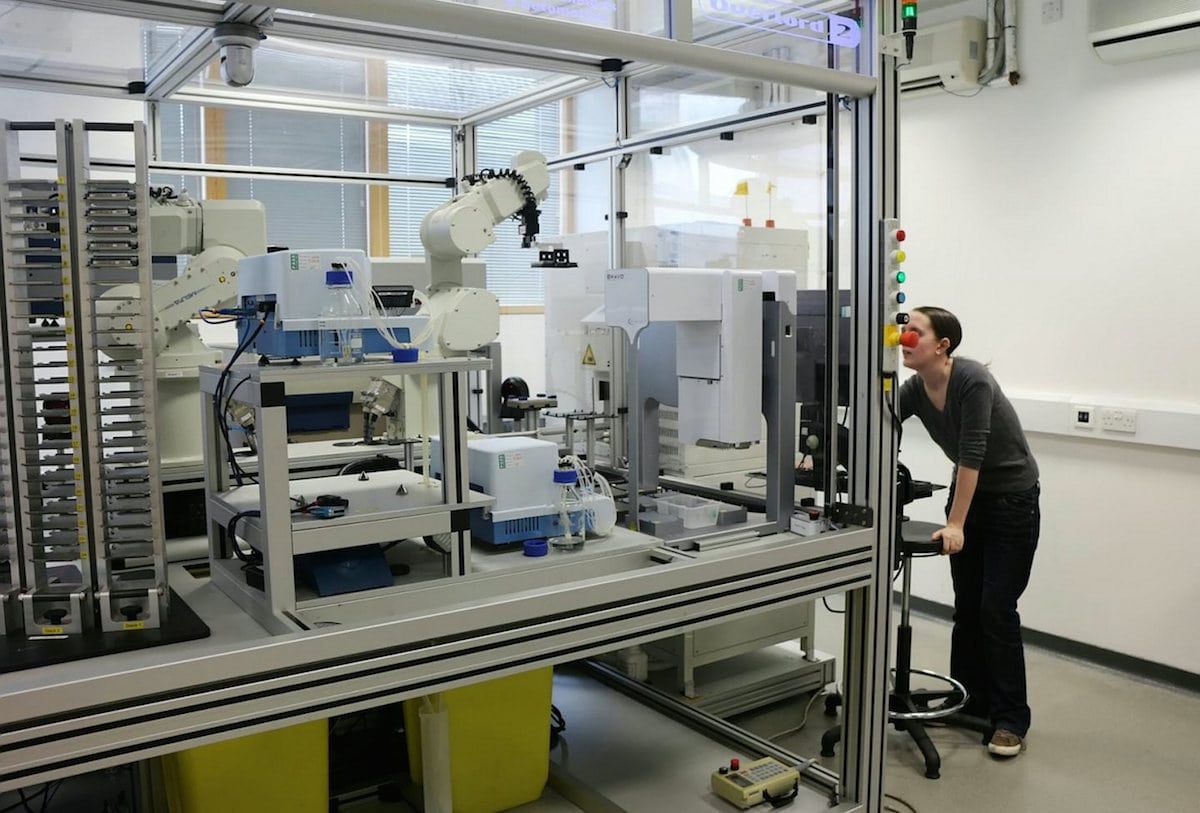
A toothpaste ingredient that stops the build-up of plaque bacteria may help fight drug-resistant malaria, a British robot scientist named Eve has discovered.
Triclosan found in many toothpastes stuns the growth of the malaria parasite which has built up resistance to a common anti-malarial drug.
When a mosquito infected with malaria parasites bites someone, it transfers the parasites into their bloodstream via its saliva.
These parasites work their way into the liver, where they mature and reproduce.
After a few days, the parasites leave the liver and hijack red blood cells, where they continue to multiply, spreading around the body and causing symptoms including fever, headaches, sweats, chills and vomiting.
But many strains are becoming resistant posing the risk the disease which kills over half a million people each year may become untreatable.
Now Cambridge University researchers – aided by the artificially-intelligent ‘robot scientist’ Eve – has made a breakthrough.
Eve was used in a high-throughput screen and found triclosan could be the answer.
Triclosan prevents the build-up of plaque bacteria by inhibiting the action of an enzyme known as enoyl reductase (ENR), which is involved in the production of fatty acids.
Triclosan his known to inhibit the growth in culture of the malaria parasite Plasmodium during the blood-stage, and assumed that this was because it was targeting ENR, which is found in the liver.
But subsequent work showed that improving triclosan’s ability to target ENR had no effect on parasite growth in the blood.
Working with ‘Eve’, the research team discovered that in fact, triclosan affects parasite growth by specifically inhibiting an entirely different enzyme of the malaria parasite, called DHFR.
DHFR is the target of a well-established antimalarial drug, pyrimethamine but the parasites are becoming immune to it, particularly in Africa.
The Cambridge team showed that triclosan was able to target and act on this enzyme even in pyrimethamine-resistant parasites.
Professor Steve Oliver said: “Drug-resistant malaria is becoming an increasingly significant threat in Africa and south-east Asia, and our medicine chest of effective treatments is slowly depleting.
“The search for new medicines is becoming increasingly urgent.”
Because triclosan inhibits both ENR and DHFR, the researchers said it may be possible to target the parasite at both the liver stage and the later blood stage.
Lead author Dr Elizabeth Bilsland, now an assistant professor at the University of Campinas, Brazil, added: “The discovery by our robot ‘colleague’ Eve that triclosan is effective against malaria targets offers hope that we may be able to use it to develop a new drug.
“We know it is a safe compound, and its ability to target two points in the malaria parasite’s lifecycle means the parasite will find it difficult to evolve resistance.”
Robot scientist Eve was developed by a team of scientists at the Universities of Manchester, Aberystwyth, and Cambridge to automate – and hence speed up – the drug discovery process by automatically developing and testing hypotheses to explain observations, run experiments using laboratory robotics, interpret the results to amend their hypotheses, and then repeat the cycle, automating high-throughput hypothesis-led research.
Professor Ross King, of the Manchester Institute of Biotechnology who led the development of Eve, said: “Artificial intelligence and machine learning enables us to create automated scientists that do not just take a ‘brute force’ approach, but rather take an intelligent approach to science.
“This could greatly speed up the drug discovery progress and potentially reap huge rewards.”
The study was published in the journal Scientific Reports.
https://www.thelondoneconomic.com/news/science/fertility-treatment-soon-become-effective-scientists-developed-assault-course-sperm/04/01/
https://www.thelondoneconomic.com/news/earliest-fossil-evidence-moths-dating-back-200-million-years-time-dinosaurs-uncovered/10/01/